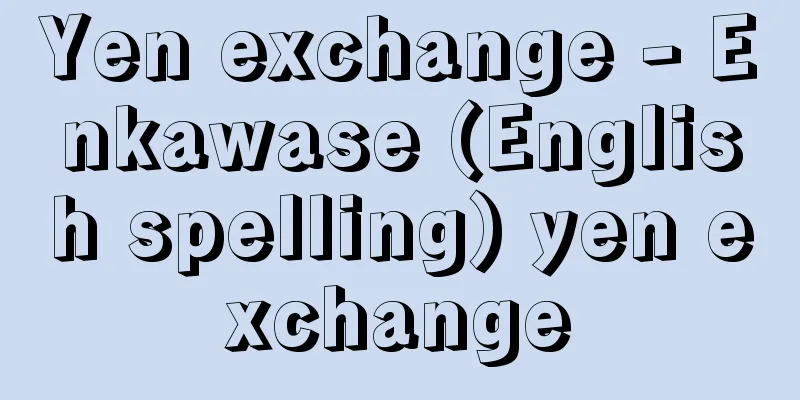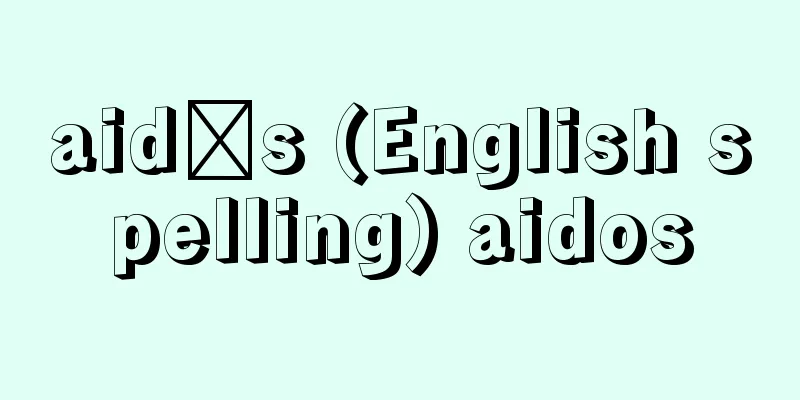Yen exchange - Enkawase (English spelling) yen exchange

|
This refers to yen-denominated foreign exchange. In practice, it is a system in which foreign transactions are settled in yen, and in international finance theory, it is a typical example of the internationalization of the yen. External settlements through yen exchange are made as follows. For example, in the case of Japanese exports, the exporter issues an export bill denominated in yen, which is then purchased by a foreign exchange bank in Japan. The purchasing bank immediately debits the yen deposit account (correspondent account) of the overseas correspondent bank held at the purchasing bank and sends the export bill overseas. The overseas correspondent bank then presents it to the importer, who buys yen with their own currency and settles the import price in that yen. What is important about this mechanism of external settlements through yen exchange is that settlements are made in the yen deposit account of the overseas correspondent bank held at a foreign exchange bank in Japan, the exchange of yen and foreign currency (foreign exchange transactions) is made overseas, and the overseas side bears the exchange risk. After the Second World War, Japan was under strict foreign exchange control and could not use yen exchange. However, in 1960, non-resident free yen deposit accounts were liberalized, allowing overseas banks to open correspondent accounts with Japanese foreign exchange banks to settle in yen, which led to the introduction of yen exchange for foreign transactions such as imports and exports. However, while yen exchange rates, which require settlement in yen in foreign transactions, are advantageous for Japan as they allow the country to shift exchange rate risk to the other party, they are not decided unilaterally. They depend on business practices in foreign transactions, the bargaining power of both sides, the acceptability of the yen and foreign currencies, and financial convenience. Although the use of yen exchange rates (yen-denominated export/import ratio = one aspect of the internationalization of the yen) has increased compared to the past, it remains at around 40% for exports and just over 20% for imports in recent years. Among major developed countries, Japan has the lowest ratio of trade denominated in its own currency. [Seiichi Nakajo] [Reference] |Source: Shogakukan Encyclopedia Nipponica About Encyclopedia Nipponica Information | Legend |
|
円建て外国為替のこと。実務的には、対外取引を円貨で決済する仕組みであり、国際金融論上は、円の国際化の代表的な実例といえる。 円為替による対外決済は、次のようになされる。たとえば、日本の輸出では、輸出業者が円建ての輸出手形を振り出し、それを本邦の外国為替銀行に買い取ってもらう。買取銀行は、ただちに自行に預けられている海外コルレス銀行の円預金勘定(コルレス勘定)からその金額を引き落とし、輸出手形を海外に送付する。受け取った海外コルレス銀行は、輸入業者にそれを提示し、輸入業者は自国通貨で円を買い、その円貨で輸入代金を決済するというものである。この円為替による対外決済の仕組みで重要なことは、決済は本邦の外国為替銀行に預けられている海外コルレス銀行の円預金勘定でなされること、円と外貨の交換(外国為替の取引)は海外でなされ、海外側が為替リスクを負うということである。 第二次世界大戦後の日本では、厳しい為替管理があり、円為替は使用することができなかった。しかし、1960年(昭和35)に非居住者自由円預金勘定が自由化され、海外の銀行が本邦外国為替銀行に円決済を行うためのコルレス勘定を開設できるようになったため、輸出入等の対外取引に円為替が導入されることになった。 ただし、対外取引で円貨による決済が求められる円為替は、為替リスクを相手側に転嫁できるため、日本側は有利であるが、一方的に決められるわけではない。対外取引における商慣習、彼我(ひが)のバーゲニング・パワー、円と外貨の受容性や金融の利便性などに左右される。過去に比べれば、円為替の使用(円建て輸出入比率=円の国際化の一つ)は増加したとはいえ、近年でも輸出で約40%、輸入で二十数%にとどまっている。主要先進国のなかでは、貿易において、日本はもっとも自国通貨建て貿易比率の低い国となっている。 [中條誠一] [参照項目] |出典 小学館 日本大百科全書(ニッポニカ)日本大百科全書(ニッポニカ)について 情報 | 凡例 |
Recommend
sūba (English spelling) suba
…The people who played an active role under Akbar...
Dichrocephala integrifolia (Ait.) O. Kuntze
An annual plant of the Asteraceae family that grow...
Easter Egg
...Jews also ate eggs during the Passover festiva...
The Rurik Dynasty (Russian: Рюриковичи/Ryurikovichi)
A Russian dynasty from the 9th century to 1598. I...
Anabasis (English spelling)
Also known as "The Retreat of the Ten Thousan...
Dreamy state (English spelling) dreamystate
...In Japan, the following three different states...
Banat (English spelling)
...Historically, it referred to a rectangular are...
Mobile library - Ido toshokan
Also known as a mobile library or traveling libra...
Rule
Generally called a scale, it is used to measure th...
Aegyptopithecus
…The differences between humans and apes include ...
Pilot system - Unkoushiseido
…The staff of the deck, engine, and radio departm...
Pellionia
...A perennial plant of the Urticaceae family tha...
SP method - S.P.H.
…An electric double layer is formed when ions acc...
Radiolarite
...Species such as the Japanese hominin Acanthome...
Secret Book
…According to the common theory, the meaning of t...







![Paramushir [island] - Paramushir](/upload/images/67cc8fe013752.webp)

